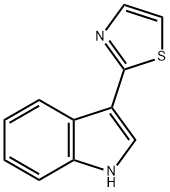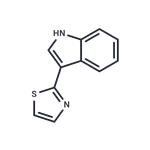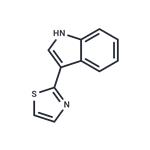Description
Camalexin is an alkaloid released by plants of the
Brassicaceae family in response to pathogen infection. In addition to antimicrobial properties and a role in plant defense, camalexin exhibits antiproliferative activity
in vitro against various cancer cell lines. Camalexin is active against HeLa, Jurkat, MDA-MB-231, and CEM cancer cell lines (IC
50s = 50.0, 46.2, 77.7, and 67.6 μM, respectively), but it is also toxic to primary human umbilical vein endothelial cells (HUVEC; (IC
50 = 74.0 μM). Camalexin induces apoptosis in Jurkat cells by increasing reactive oxygen species (ROS) levels and activating caspase-8 and caspase-9. In human prostate cancer cell lines, camalexin (25 μM) is more active against aggressive lines and increases ROS levels and apoptosis
via cathepsin D relocation from lysosomes to the cytosol.
Biochem/physiol Actions
Camalexin is a phytoalexin isolated from cruciferous plants that exhibits antibacterial, antifungal, antiproliferative and cancer chemopreventive activities. Apparently, camalexin increases the ROS levels and is more effective in aggressive prostate cancer cells that express high ROS levels. In Arabidopsis thaliana, camalexin and salicylic acid confer resistance to Phytophthora capsici.





